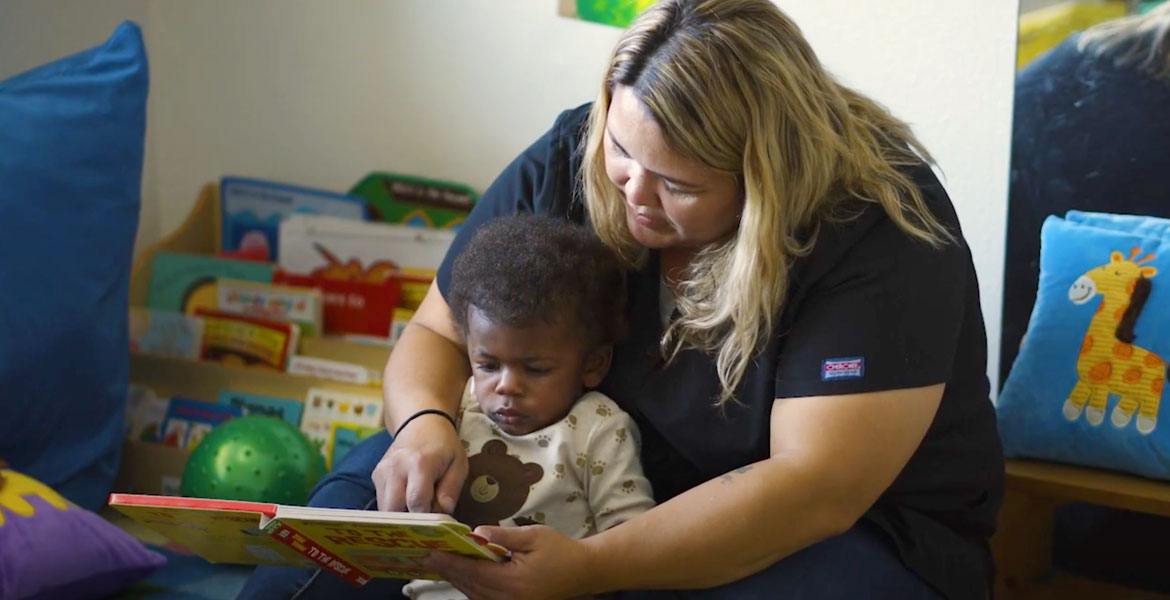

Starting in 2022, Transitional Kindergarten (TK) classrooms are required to have a minimum of two staff members in a class of no more than 24 students (a 12:1 student to adult ratio). One of the two staff members must be a credentialed TK teacher.
Starting in 2023, TK classrooms with Early Enrollment students (children born between June 2nd and September 1st) must meet student-adult ratios of 10:1 and have a maximum class size of 20.
TK teachers must possess a valid teaching credential in addition to a TK-specific certification.
TK teachers who are first assigned to a TK classroom after July 1, 2015 must have, by August 1, 2025, one of the following:
The second adult in the classroom can be either a credentialed teacher, classified staff, or another paraprofessional or assistant. School districts may wish to create specialized job descriptions that meet the unique needs of the TK classroom. Some school districts, such as San Diego Unified School District, have implemented innovative programs to create co-teaching models in which the second adult in the classroom is a California State Preschool Program (CSPP) teacher holding a Child Development Teacher Permit.
What: The 2022-23 California State Budget included a policy change that grants flexibilities to help more quickly fulfill the state’s need to hire roughly 11,900 to 15,600 additional credentialed teachers to teach TK as it expands to serve all 4-year-olds by the 2025-26 school year. Budget trailer bill AB 210, updated Section 44300 to allow the California Commission on Teacher Credentialing (CTC) to issue and renew a one-year emergency specialist teaching permit in early childhood education that authorizes teaching a TK general education classroom. These permits must be applied for by the local employing agency on behalf of the individual in need of an emergency permit.
How to Apply: School districts interested in applying for TK emergency permits on behalf of qualified candidates must submit justification to the CTC for approval. As part of the application, the district must submit documentation that it has exhausted its recruitment efforts and has been unable to recruit a sufficient number of qualified TK teachers to meet its needs. This documentation must also be adopted as a motion by the district’s governing board.
Requirements: With approval from the CTC, the school district can then have applicants that meet the following requirements serve as a lead teacher in a TK classroom with an emergency permit.
Renewal of Emergency Permits
The Commission may renew an emergency specialist teaching permit in early childhood education for one additional year, if all of the following conditions are met:
To receive alerts about when this permit is established and available for issuance, please subscribe to the Commission’s Certification Division eNews.


Allocations to this program in the 2021-22 and 2022-23 State Budgets provide funding for teachers, administrators, paraprofessionals who work with pupils, and classified staff that interact with pupils. Funds can be used to assist credentialed teachers to obtain the training or units needed to be fully qualified to teach TK or for other professional development for the lead teacher, second adult, or any other paraprofessional working in the TK classroom. Funding can also be used to provide professional development to administrators to help them understand developmentally appropriate practices and how to best support an effective TK classroom.
Funds can be used for:
The Teacher Residency Grant Program funds one-time grants that can be used to develop new or improve access to existing teacher residency programs that support designated shortage fields including TK.
Grants can be up to $25,000 per teacher candidate in the residency program, matched by that grant recipient at a rate of 80 percent of the grant amount received per participant.
Grant program funding shall be used for, but is not limited to, any of the following:
Funds are available until June 30, 2026.
This program recruits classified school employees and encourages them to enroll in teacher training programs.
The maximum grant to a local educational agency (LEA) will be $24,000 over five years per participating teacher candidate. Kindergarten, TK, and Early Childhood Education (ECE) teachers are recognized as a priority for funding.
Funds are available until June 30, 2026.

Creating a quality TK experience for children and building a successful program requires a great deal of administrative leadership. With your guidance and support, teachers can build a strong continuum of practice throughout their schools. As schools expand TK programs, consider the following important elements to initiate a professional development plan.
Young children gain new skills and understanding through active, hands-on experiences. They need instructional programs that provide engaging whole group, small group, paired and individual activities, and language-rich learning environments that include spaces such as block areas, cozy reading centers, and dramatic play areas. Only a limited amount of time should be spent on “desk work” or exclusively academic activities. Administrators can support teachers by learning about, understanding, and helping to implement a rich, developmentally appropriate TK program.
Some features you will see in a high-quality TK classroom include:
Given the focus on young learners in TK, two key areas of professional development are: 1) utilizing developmentally appropriate instruction for young students, and 2) supporting the social-emotional development of young students. Other professional development areas that can support teachers in addressing the needs of their diverse student population might include:
In addition to the Educator Effectiveness Block Grant described above, California has allocated $300 million in TK Planning and Implementation Grants that can be used to provide professional development to teachers and staff.
Peer coaching and teaming are ways that a district can encourage professional development that continues throughout the year. Administrators can support teachers in forming a professional learning community (PLC) by providing opportunities to:
Districts have created PLCs that target TK teachers within a school, within a hub of adjacent schools, across their district, as well as across grade levels such as creating a Pre-K through Kindergarten PLC.
Note: Information on this page was provided by School Services of California, Inc.